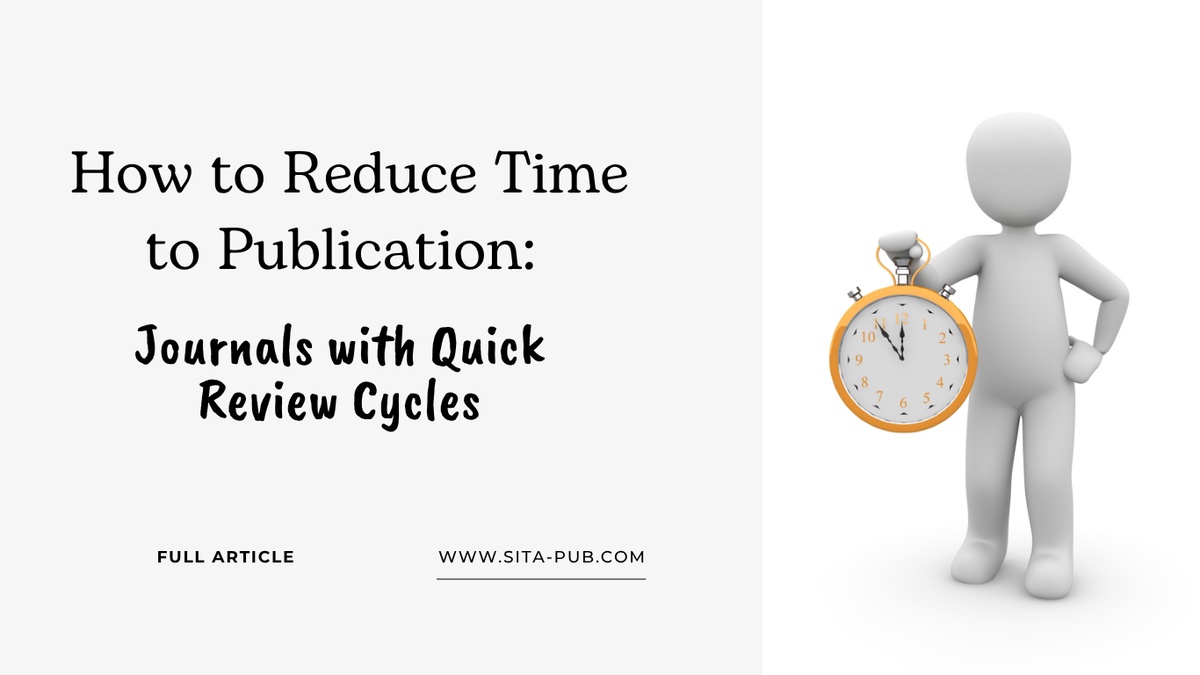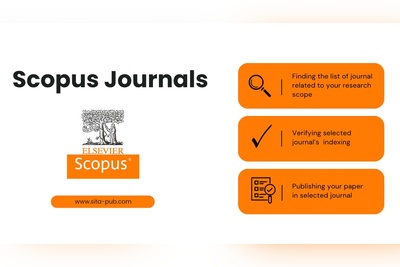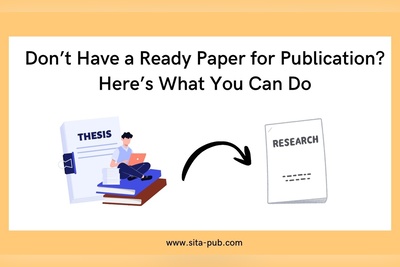How to Reduce Time to Publication: Journals with Quick Review Cycles
Publish your research faster! Learn how to find journals with quick review cycles.

Publishing a research paper in an international journal is a rewarding yet time-consuming process. For many researchers, especially those facing strict academic deadlines—such as graduation requirements, promotion reviews, or grant milestones—waiting six months to over a year for publication can be a major challenge. The academic publishing pipeline typically involves multiple stages, including editorial screening, peer review, revision, and production, each of which can take weeks or even months. However, there are ways to significantly reduce your time to publication without compromising the quality or credibility of your work.
In this article, we’ll explore how to minimize delays in the publication process, understand what journals with quick review cycles are, and how to identify and submit your research to them effectively.
Why Publication Time Matters
Timely publication is crucial for several reasons. For graduate students, it may determine whether they can submit their thesis or dissertation on time. For academics, publication speed can influence career advancement, funding renewals, or participation in competitive research projects. Additionally, in rapidly evolving fields like medicine, engineering, and technology, sharing results promptly ensures that your findings remain relevant and impactful.
Yet, traditional journal publication cycles often take 6–12 months, sometimes even longer, especially when papers go through multiple rounds of revision. This delay can be frustrating and may limit opportunities for professional growth. Fortunately, a growing number of journals now recognize the need for speed and have introduced quick review cycles and fast-track publication options.

How to Reduce Time to Publication

To reduce your overall time to publication, you need to focus on both pre-submission strategies and selecting the right journals.
Prepare a flawless manuscript before submission
A well-structured, clearly written manuscript minimizes the likelihood of rejection or multiple revision rounds. Proofread your paper for grammar, formatting, and adherence to journal guidelines. Consider professional editing and formatting services to save time.
Choose journals that align perfectly with your paper’s scope
Submitting to the wrong journal can result in immediate desk rejection, wasting valuable time. Always review the aims and scope section of a journal before submission to ensure that your research fits.
Target journals with efficient editorial processes
Not all journals handle submissions equally. Some are known for quick responses, while others may take months to assign reviewers. Selecting journals that explicitly advertise quick or accelerated review options can dramatically shorten the process.
Respond quickly to reviewer comments
When you receive reviewer feedback, address all points promptly and carefully. Delays in revision are one of the most common reasons for extended publication timelines.
Use professional publication support
Partnering with experienced academic consultants or publication agencies—such as SITA Academy—can help you identify the best fast-track options, prepare your submission materials, and navigate the editorial process efficiently.
What Are Journals with Quick Review Cycles?
Journals with quick review cycles are academic journals that have optimized their peer review and editorial processes to deliver decisions faster—often within 2 to 8 weeks. These journals prioritize speed while maintaining academic rigor.
Key features of quick review cycle journals include:
Rapid peer review: Reviewers are given shorter deadlines (e.g., 7–14 days) to evaluate manuscripts.
Priority editorial handling: Papers are assigned to editors immediately upon submission.
Early online publication: Once accepted, the paper is published online ahead of print (known as online first or in press).
Transparent timelines: Journals often list expected review and publication durations on their websites.

These journals are not “pay-to-publish” or predatory; reputable publishers such as Elsevier, Springer, Taylor & Francis, and MDPI all offer quick review options for select journals.
How to Find Journals with Quick Review Cycles
Finding journals that genuinely offer fast publication requires strategic searching and careful evaluation. Here are key methods:

Check publisher websites
Major publishers often provide filters for “rapid communication,” “express publication,” or “accelerated review.” For example:
Elsevier offers “Fast Track Articles” in certain medical and engineering journals.
Springer’s “Rapid Communications” section features papers with short peer-review cycles.
MDPI is known for average review times between 14–30 days.
Search Scopus and Web of Science databases
Use keywords such as rapid publication, fast track, express review, or accelerated peer review in your search. This will help you identify journals that highlight short turnaround times in their submission information.
Review journal metrics
Quick review cycle journals often maintain healthy acceptance rates and lower average “time to first decision” statistics (usually published on their homepage or submission portal).
Seek expert assistance
Many researchers save time by consulting publication support experts who already have access to lists of verified fast-track journals in various disciplines. For instance, SITA Academy maintains an up-to-date database of Scopus and Web of Science–indexed journals with proven quick review systems.
How Long Does Fast Publication Take?
While standard journals may take 6–12 months from submission to publication, fast-track or quick review cycle journals can publish in as little as 4–8 weeks.
A typical timeline looks like this:
Stage | Average Time (Fast-Track Journal) |
Editorial screening | 1–3 days |
Peer review | 2–3 weeks |
Revision | 1–2 weeks |
Acceptance and production | 1–2 weeks |
Online publication | 3–5 days |
Of course, timelines vary by field and publisher, but the overall process remains significantly faster than traditional publication routes.
Fast-Track Journal Recommendation Services at SITA Academy
We understand how critical time is for researchers who need to publish quickly. That’s why we offer Fast-Track Journal Recommendation Services, designed to connect you with reputable Scopus and Web of Science–indexed journals that have quick review cycles and high acceptance potential.
Here’s how our process works:
Send your paper or abstract: Share your full manuscript or summary with our expert team.
Expert analysis: Our specialists—covering disciplines like medicine, engineering, management, and social sciences—analyze your paper’s content, scope, and quality.
Journal recommendation report: We provide a detailed list of suitable fast-track journals, including:
Indexing status (Scopus / Web of Science)
Expected review and publication time
Journal ISSN and publisher information
Acceptance probability
Submission support: Our team assists you with formatting, cover letters, and submission according to journal requirements.
Follow-up and communication: We help you track your paper’s progress to ensure timely review and acceptance.

Conclusion
Reducing your publication time is possible with the right strategy and journal selection. By understanding how quick review cycle journals operate and leveraging expert guidance, you can dramatically cut down the waiting period between submission and publication.
Verified Contact Channels
If you have any questions, inquiries, or would like to learn more about our services, please don't hesitate to reach out to us. Our dedicated team is ready to assist you.












